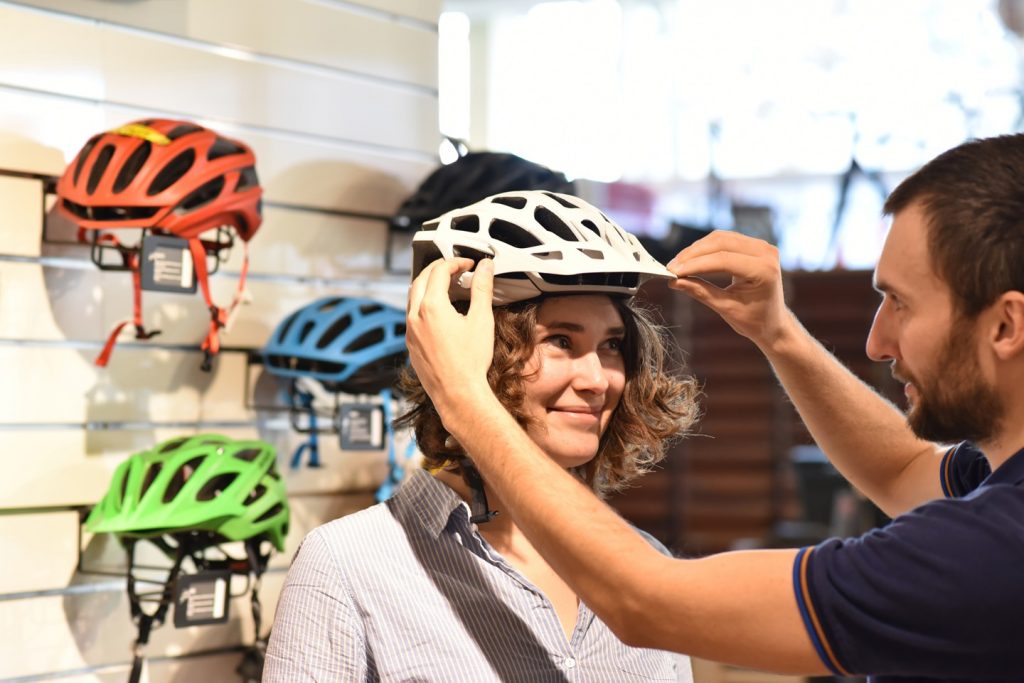Bicycle helmet. Protect your head effectively!

Cycling is a great way to stay active, but only if you take all possible safety measures. Whether you ride a unicycle to work, navigate bike paths or participate in races, don’t avoid wearing a helmet. It’s a piece of cyclist’s outfit that can protect your head, your health and even save your life.
Wearing a bicycle helmet vs. regulations
In Poland, there is no obligation to wear a bicycle helmet when riding two wheels – this applies to both children and adults. Driving without it, you don’t have to expect a ticket. Regulations requiring cyclists to wear it are also rare throughout Europe.
The exception is the Czech Republic, where a helmet must be worn on the head by all cyclists under the age of 18. In Croatia, it is mandatory for children under the age of 16 to wear one, and in Austria, young cyclists before their 12th birthday.
Remember, however, that riding without a helmet on your head can have tragic consequences. This puts you at risk of serious head injury during an accident. Therefore, wearing a helmet is a matter of common sense and a sign of a cyclist’s maturity.
What kind of bicycle helmet to choose?
Not every helmet you put on your head will protect you well from injury. It needs to be a model made of the right materials, tailored to the size of your head and how you ride.

The right size
If you want to find out what size helmet you need, you need to measure the circumference of your head just above the eyebrow line.
A well-fitting model is one that will offer slight resistance when you put it on. It must fit precisely around the entire head. The cheek sponges, on the other hand, should apply gentle pressure to the cheeks. The helmet must be fastened so that it does not move on the head. At the same time, its hard parts must not put unpleasant pressure.
Wearing comfort
The greatest comfort is provided by bicycle helmets that have as many ventilation holes as possible. This keeps the skin dry and the head does not overheat during the ride.
The interior of the helmet is also important for comfort. It should have a soft, pleasant to the touch lining. It is worth that it is made of antibacterial materials and detachable, so that it can be washed. In addition, the most comfortable helmet is one that does not feel and is not a burden to the cyclist. Therefore, when choosing a model for yourself, pay special attention to how much it weighs.
Helmet and riding style
Choose a model that matches the bike you ride. You can choose, for example, a helmet:
- urban – it has an exposed face, classic shape, often fashionable print, color, is lightweight, while being made of solid materials;
- full-face – these are helmets that protect both the skull and jaw, and when combined with bicycle goggles, also the eyes. They are designed for competitive cyclists, taking the most difficult and risky routes. They perfectly protect against injuries;
- Road – such a model has an elongated, aerodynamic form, so as not to impede the development of high speeds on the route;
- MTB – these are universal helmet models – they will work well in the city and on more demanding routes. They reach halfway to the occipital area, and some of them also have practical visors to protect from the sun’s rays.
Made of high-quality materials
Bicycle helmets are made of durable polycarbonate, polyvinyl chloride, epoxy resins and are reinforced with fiberglass. Currently, the most durable models are considered to be those that are manufactured using in-mold technology. This means that the shell is welded and forms a single unit with the rest of the helmet.
If you want to make sure that you are well prepared for riding a unicycle, visit a bike repair station, check tire pressure, lubricate the chain and don’t leave home without a sturdy bicycle helmet. It’s a safeguard against the dangerous consequences of accidents, an expression of responsibility, a concern for your own life and health.

